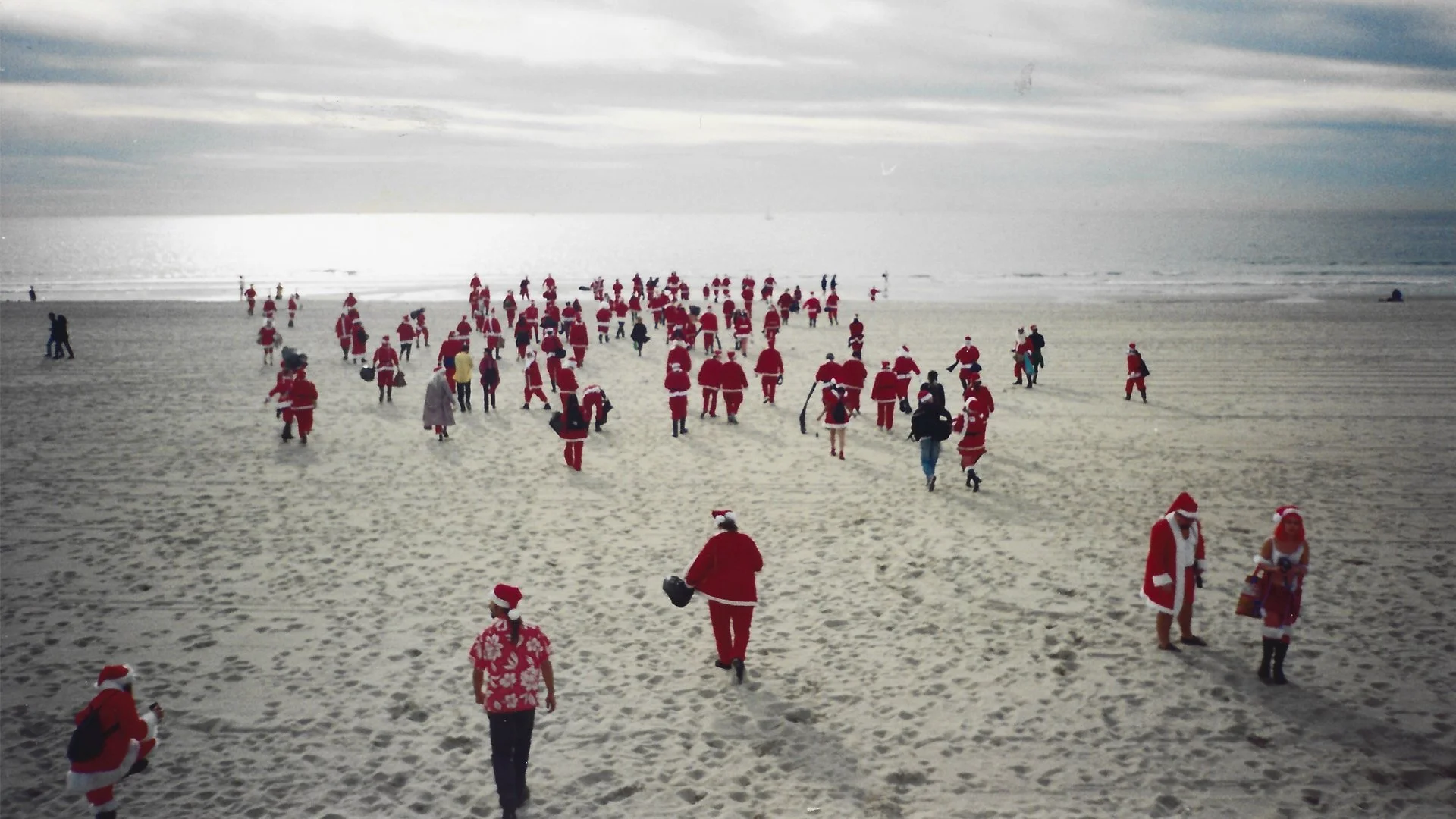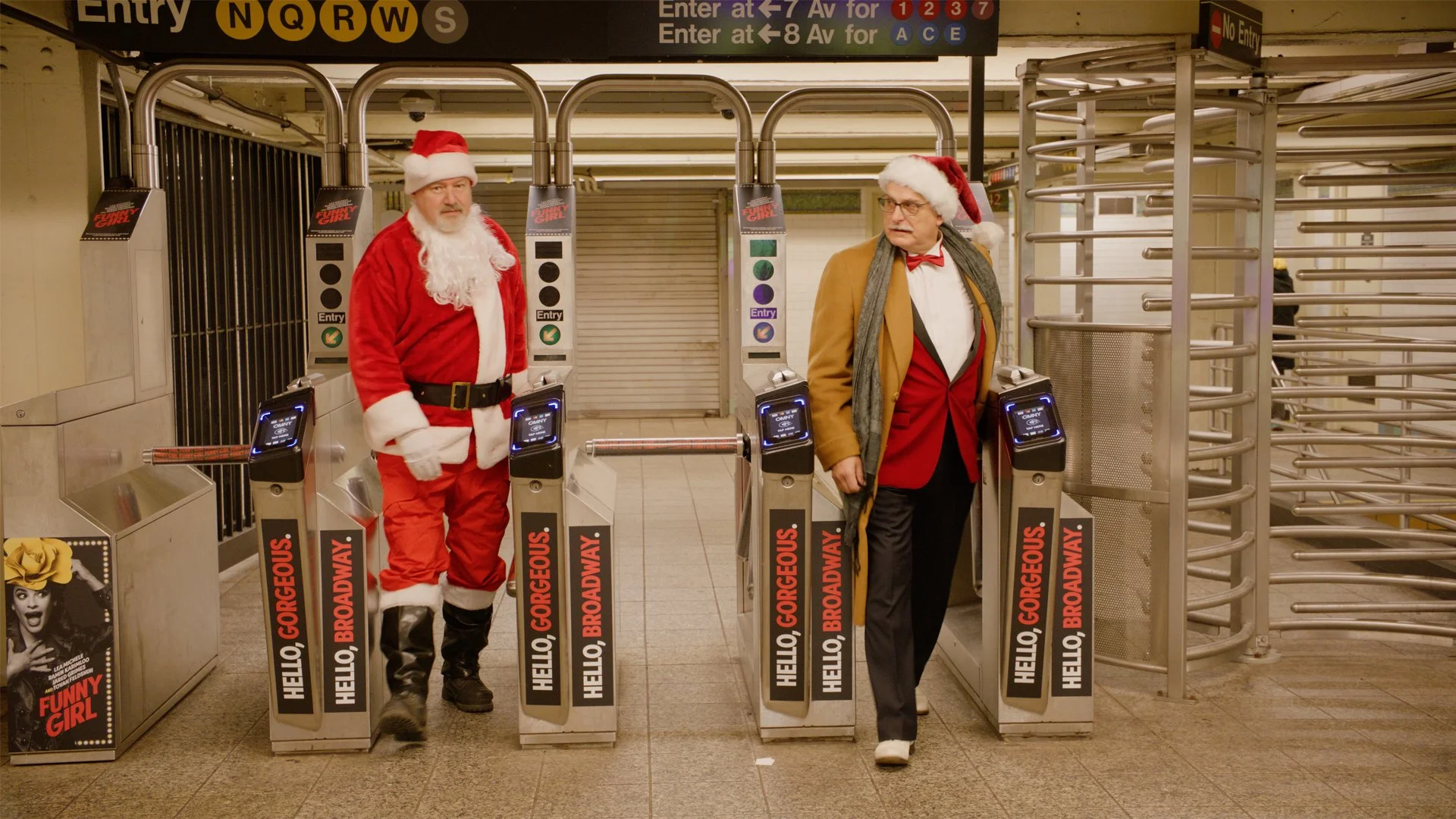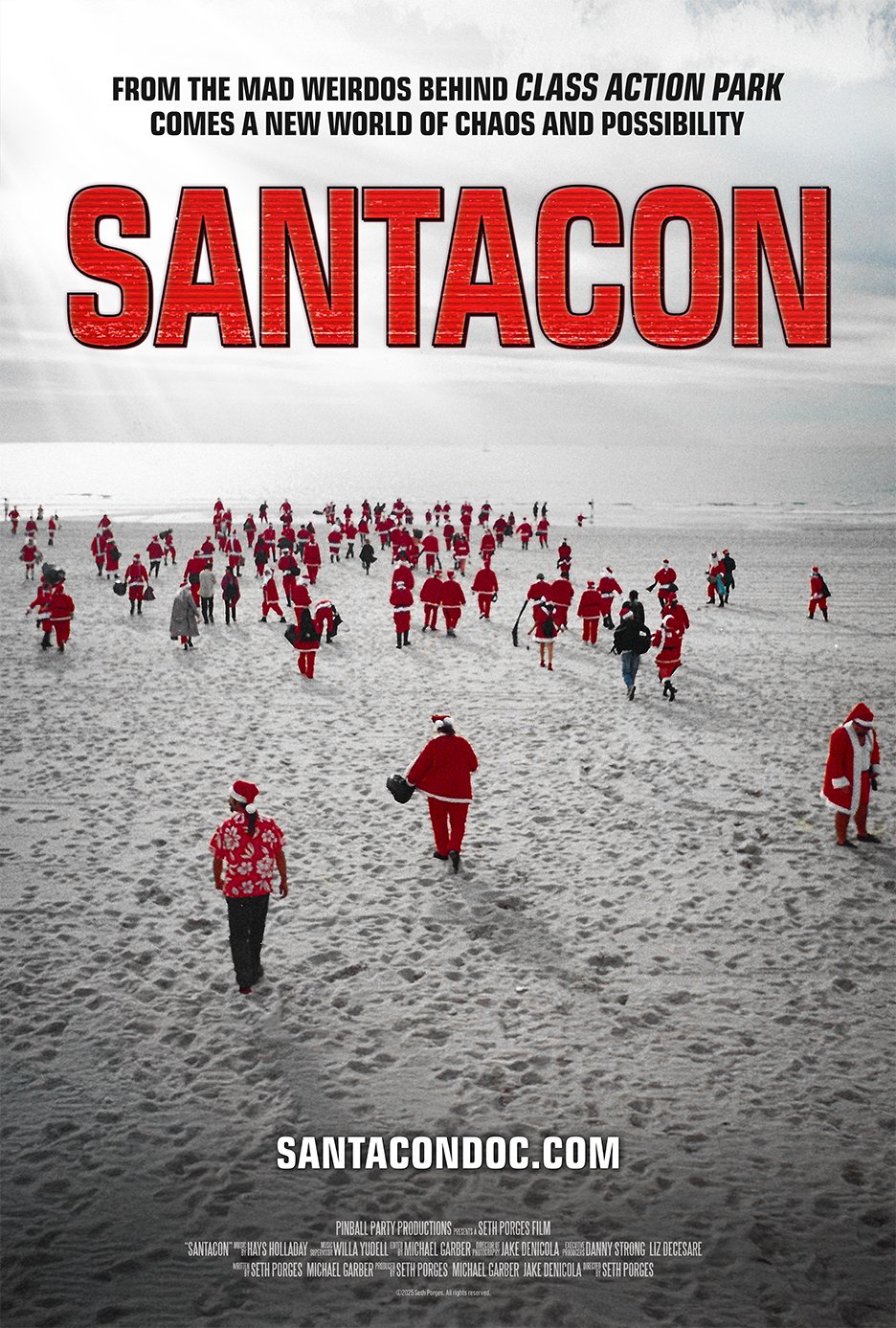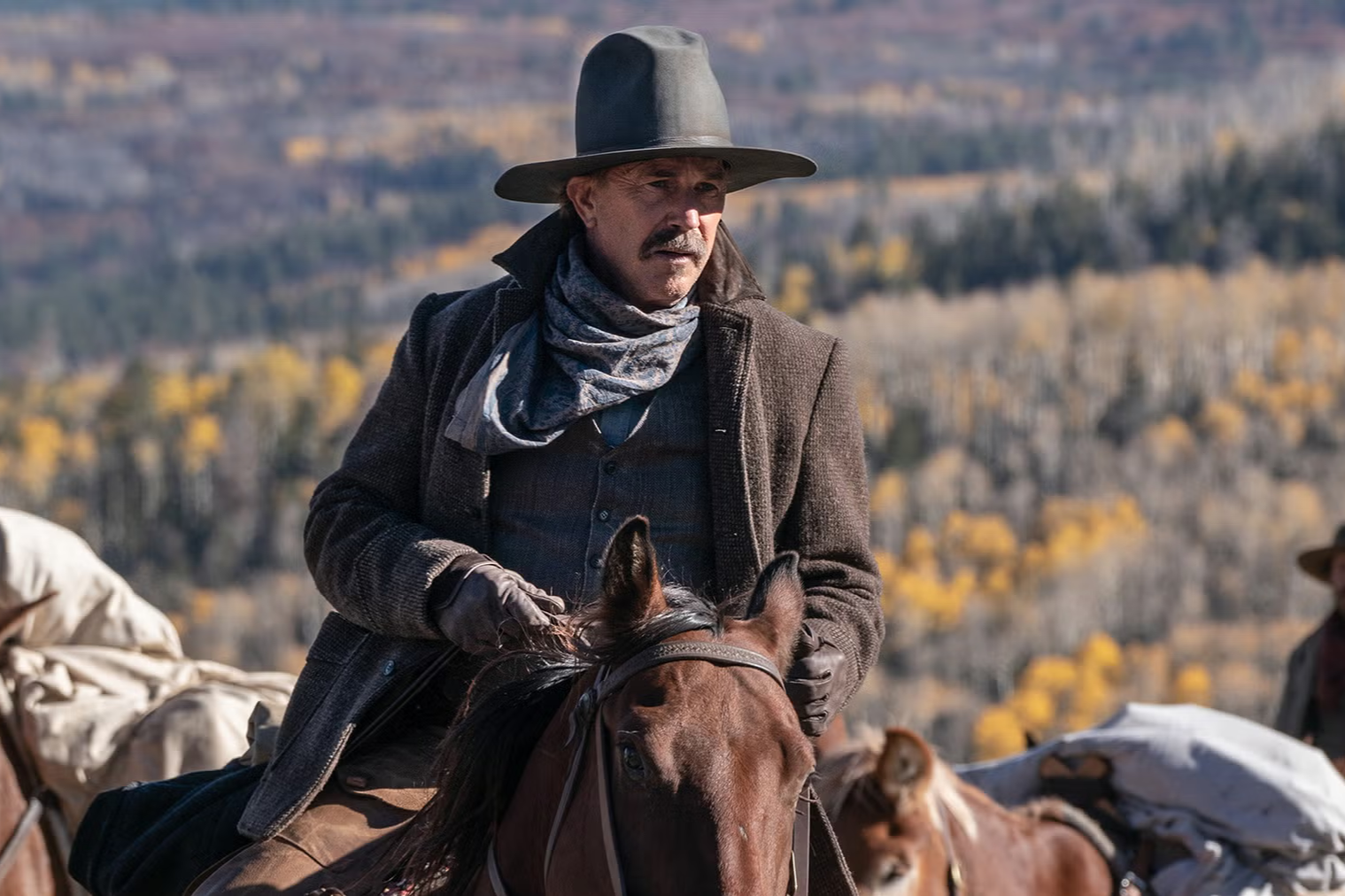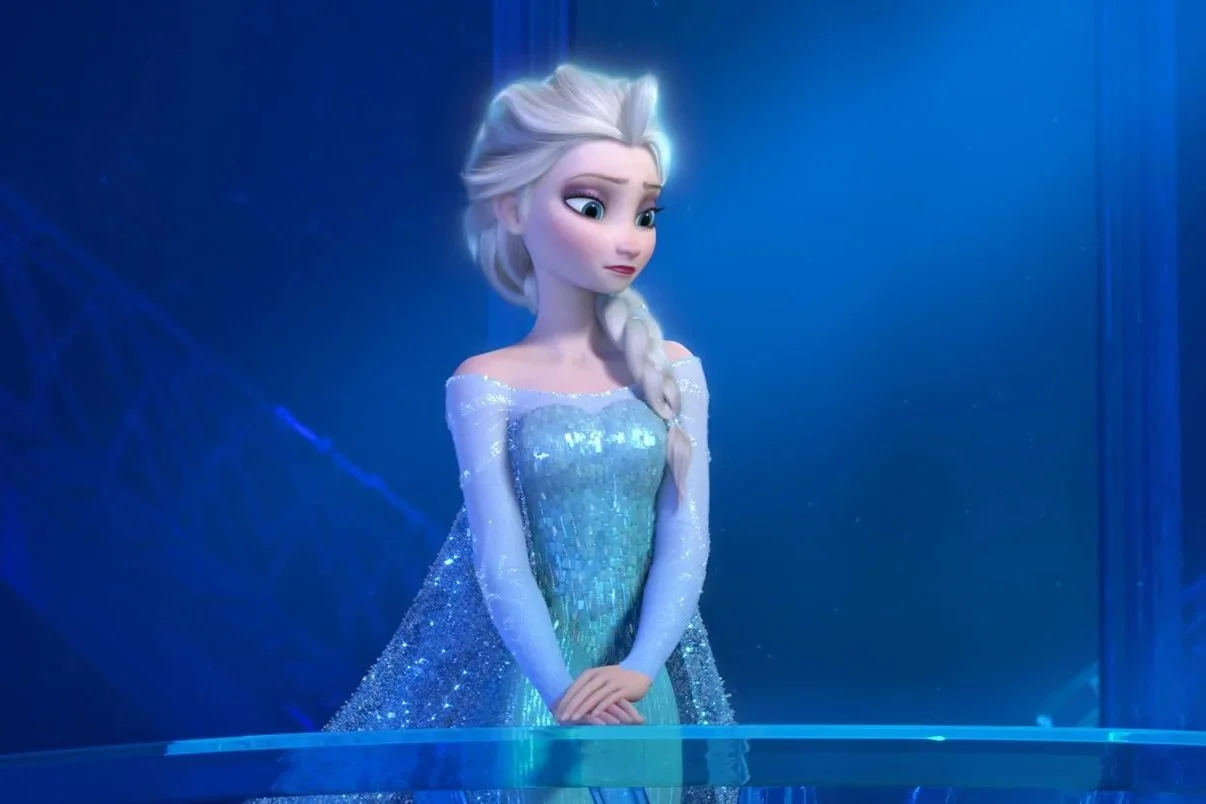Seth Porges Talks Chaotic New Documentary ‘Santacon’ and the Value of Creating
Seth Porges, the director behind Netflix’s global hit ‘How To Rob A Bank’ and ‘Class Action Park’ returns with a documentary about what some deem “the worst day of the year”: ‘Santacon.’
Though Santacon is contemporarily seen as more of a yearly New York City pub crawl, it’s founding was something different altogether. Through the Cacophony Society—the group that started Burning Man and served as inspiration for ‘Fight Club—Santacon seemed to be the beginning of a prank to express frustrations with Holiday consumerism of the 1990s.
Top Film recently spoke with director Seth Porges about his latest venture, which premieres at DOC NYC on November 13.
How does it feel to have “Santacon” premiering at the Doc NYC festival in a few days?
Seth: We're premiering this thing at DOC NYC in New York City, of course, just a couple of weeks before the actual Santacon. So it's kind of perfect, you know? I think we have the chance to kind of scramble people's ideas about what this event is and what it was — right before they have to face it for themselves in the streets of New York.
Santacon came around in the 90s, and really took the image of Santa Claus to the next level in this satirical way of mocking holiday consumerism. Regarding the rich and elites, John Law said “You can’t go after their money but you can make fun of them.” Cacophony had a lot of events going on in the 90s… For you, why was this movement (Santacon) the one event you wanted to highlight in a documentary?
Seth: Well, what really drew me into the story, honestly. I was stumbling across the archival footage. Much of it was shot by an old friend of mine named Scott Beal, and I was drawn into this when I just ran into him at a bar one day, and he mentioned that he personally had video recorded the first several years of Santacon. And I was like, wait, what? Because all I knew about Santacon was that it's the worst thing in the world. I never really thought much beyond that. And when I saw that footage, I saw this story play out in front of me. That really, really, really drew me in. This chaos and camaraderie and collaboration, and just absolutely insane moments happening before my eyes that were caught on tape in a time when people weren't really catching much on tape. And so people were acting in front of a camera in a way that you wouldn't in a modern day, when you have to worry about footage showing up on social media and whatnot. So people were both recording themselves, but also acting with abandon. And that, to me, is just the perfect recipe for an amazing movie, honestly.
How did you build trust with your subjects?
Seth: Yeah, that's my favorite part about making a documentary, is getting to know the people who are going to be in your documentary — and entering their world and in doing so, hopefully earning their trust. This project isn't one that involves murder or cults or deep traumas or anything that oftentimes requires a documentary filmmaker to tread very lightly. I think, honestly, a lot of the folks have just seen my past work, especially Class Action Park, and they knew kind of the tone I traffic in. And I think that allowed them to trust me to handle their story the way they wanted to be handled.
Has your experience exploring and writing about the Polyvagal Theory influenced the way you approach crafting your documentaries?
Seth: Thank you for mentioning that actually. I wrote a book called Our Polyvagal World: How Safety and Trauma Change Us, and I wrote that with my dad, who's a neuroscientist who created Polyvagal Theory. And Polyvagal Theory is sort of this model for how the nervous system of the body responds to the world around us, including things like trauma or feelings change our body. I think my understanding of that has absolutely informed how I approach documentary filmmaking, both in terms of just the cognizance and empathy required when you enter somebody else's world and the ways you might accidentally hurt somebody if you're not careful when you're making a documentary.
Courtesy of Pinball Party Productions.
Seth [cont’d]: But then also just the power of documentary filmmaking as a medium to transmit empathy and understanding to viewers and to other people, you know, and the value of that. I think what makes documentary so powerful is that they're real. And when you can find somebody real who you didn't realize you had anything in common with, but after spending ninety minutes with them watching a movie, you can sort of see how we're all kind of the same. And I think there's something really beautiful about that process. And that's one of my favorite things about making and watching documentaries.
The Cacophony Society felt like the pent-up energy of the frustrations of people who were increasingly against commercialism and consumerism. They of course hosted black tie sewer parties, car hunts, TV massacres and eventually Burning Man. Now, especially with Burning Man, it feels like the events they started in order to fight against the establishment are now mainstream and subject to the rich getting involved. What does the transformation of events like Burning Man and SantaCon say about how counterculture gets absorbed into mainstream culture?
Seth: Spending time with the original creators of Santacon who were involved with Cacophony Society back in the day… I think what really struck me the most about folks like John Law in particular is the maturity and clear headedness and that that they approach how the things they pioneered have changed over the years. And I think in the end, this is a movie about allowing things to change and move on without being overwhelmed with regrets or judgments. You know, John very easily could look at how the things he was involved with in the early days. He was one of the co-creators of Burning Man as an example… He could very easily look at what these things have become and say, they're the worst thing in the world. I hate them, and I hate everybody who has anything to do with them.
Courtesy of Pinball Party Productions.
Seth [cont’d]: But he's not like that. He instead is able to say, I made this. It's no longer mine. It's now the world's go do with it what you will. I'm not going to judge, but you know what?—I'm going to do something else cool. And maybe the world will do something else cool with that again later. The answer I think you kind of come away with is instead of choosing anger, it's just to go do more cool stuff and try to make something new yourself.
In New York, even though the events of Santacon are now pub crawls, everyone seems to be having a good time… even if you step in a puddle of vomit.
Seth: If the Cacophony Society had any sort of message to it. It's that fun is an end to itself, that there's something noble, beautiful and important about striving for fun, striving for creativity, and striving for fun and creativity within a context of collaboration with with other people. And I think a lot of times we lose sight of that. You know, the things we value in the world today may not be just simple fun, right? There's other things that have value that we value as a society. And I think what Cacophony is asking us to do is say, wait a second. Having fun is such an important part of living a good life. And if we're having fun and the people around us are having fun, it doesn't need to be any other reason, right? And I think there's something really just beautiful about that message.
There were people that joined Santacon purely for the excuse of causing chaos, and people that joined to genuinely send a message about the state of the modern world. How did you go about balancing humor and critique in portraying something that’s both absurd and meaningful?
Seth: I don't actually seek to critique much of anything in a thing in the film. You know, the movie is is entirely presented through the words of the people who participate in it and through their actions in the footage. And you always with Santacon had people behaving badly. You had bad Santas, right? You had people getting drunk, causing trouble, getting arrested from the very first Santacon. And what really struck me as what changed the most, and what was so different between the old Santacon and new Santacon isn't that the Santa is necessarily reacting different, although there are way fewer of them. Back then, there were always getting into a little bit of trouble. They're always causing a little bit of chaos. Acting like Muppets running around cities. What changed is the people around them changed because Santacon threw that chaos, created confusion, because nobody had ever seen this before. Nobody knew what to make of it.
Courtesy of Pinball Party Productions.
Seth [cont’d]: And in trying to make sense of this thing that boggled their minds and confused them, it knocked them out of their day to day way of thinking and perhaps day to day routine. And that was the goal of Santacon. It was never a specific political message. It was always to confuse people so that maybe they would think just a little bit differently. But what happened, of course, is Santacon just kept going and going and going and eventually you've seen it. It's no longer new, it's no longer novel, it's no longer confusing. You know what it is. And so that power is all gone. It's all you're left with instead is just the chaos and the vomit and the fighting without any meaning or purpose beyond that, except perhaps to have fun. And again, there is some value in that.
Would you ever partake in a Santacon yourself?
Seth: Absolutely not. I had avoided Santacon for some twenty years that I’ve lived in New York City. The only time I had ever gone into the belly of the beast, the heart of darkness of Santacon was to film this movie. And that was when we, you know, took the original creators of Santacon back to the event they created for the first time in some twenty five or so years. And to me, that is how the movie had to end. This is this is a Frankenstein story. Doctor Frankenstein has to confront his creation, has to come face to face with his monster and come to terms with this new world... I think even perhaps the original creators of Santacon expected that it would be just fear and loathing and horror, but instead I was just blown away by how they allowed themselves to move past that judgment and instead say, you know what? This isn't for me. That's cool. That's fine.
You’ve spent a lot of time with John Law and Chris Radcliffe. What’s something that you’ve learned about yourself or new ways of thinking of certain things from spending so much time with them and getting to understand their psyches?
Seth: Anytime I make a documentary, it changes my life in some way. It really does. You spend time with people and you learn from them. And hopefully I, as a filmmaker and as a person, grow from that experience. This movie truly did change my life, and it changed the way I think, it changed the way I see the world in many ways. I was able to spend time with people who had dedicated their lives towards fostering a sense of creativity and exploration in a world that oftentimes feels like it's designed to soften those instincts out of us as people. This movie begins and ends with people talking about what it means to be an explorer, and what it means to live a life of exploration. And to me, spending time with those people, I hope I got just a little bit of that rubbing off on me.
What kind of message do you want people to walk away with after watching ‘Santacon’?
Seth: There’s this very 2025 feeling. I think of the realization that oftentimes we find ourselves in a world we no longer understand, and maybe it doesn't make sense to us, but what next? How do you respond to that? Are you angry? Are you yearning for some imaginary days of yore? Do you just despise the new generation for existing? Or do you do your best to be there for people and to encourage other people to be creative and to have fun and realize that, you know what? There's something really valuable just in that.
‘Santacon’ premieres November 13 at DOC NYC.
TRENDING NEWS


